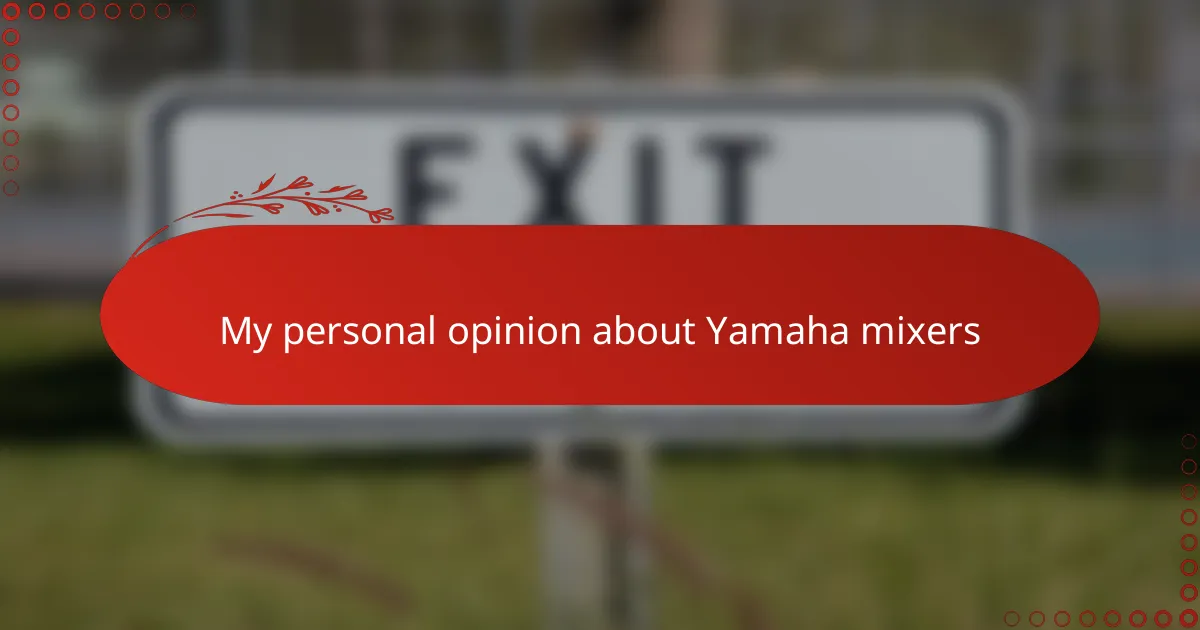Key takeaways
- Yamaha mixers are designed with intuitive layouts, enhancing user confidence and easing the handling of multiple audio sources during live broadcasts.
- Key features include comprehensive connectivity options, responsive controls, and built-in effects that streamline setup and improve sound management.
- The reliability and consistent audio quality of Yamaha mixers help maintain clarity and enhance listener engagement, particularly during high-pressure scenarios.
- Overall, Yamaha mixers balance user-friendliness with professional capabilities, making them invaluable tools for serious radio broadcasters.

Understanding Yamaha Mixers for Radio
When I first started working with Yamaha mixers in a radio setting, what struck me was their intuitive layout. It’s as if the controls were designed with broadcasters in mind, making it easier to focus on the content rather than fumbling with technical details. Have you ever noticed how a straightforward mixer can instantly boost your confidence behind the console?
Yamaha’s reputation for consistent audio quality comes into play heavily during live broadcasts. I’ve experienced firsthand how their mixers handle multiple audio sources without losing clarity or introducing noise, which can be a real lifesaver on air. How often do we underestimate the role of reliable equipment in maintaining a smooth broadcast flow?
Understanding the channel strips and their flexibility really opened my eyes to the mixer’s potential. Yamaha mixers typically offer customizable EQ and compression controls per channel, which allows for fine-tuning voices to sound just right. When you realize how much control you have, it changes how you approach sound management entirely.
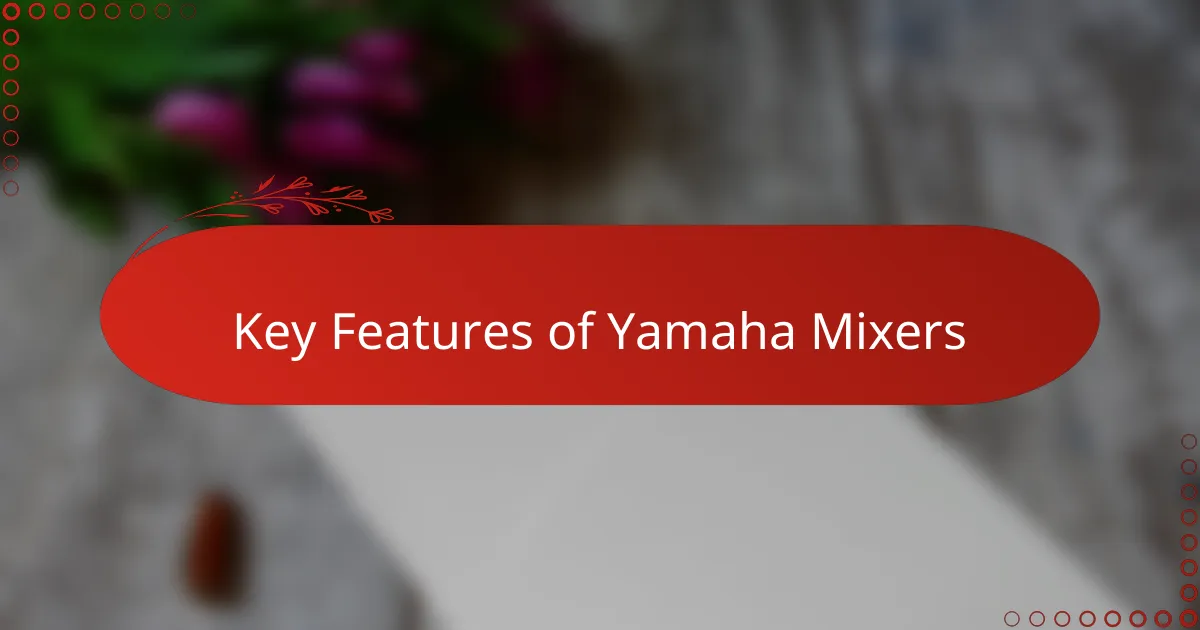
Key Features of Yamaha Mixers
One feature I find indispensable on Yamaha mixers is their comprehensive connectivity options. With multiple input types and outputs, I can easily integrate various microphones, music sources, and external processors without scrambling for adapters. Have you ever struggled to connect everything seamlessly during a live show? Yamaha’s diverse ports truly prevent that headache.
Another aspect that stands out is the smooth, tactile feel of the faders and knobs. It might sound trivial, but when you’re live, precise control is everything. I remember moments when subtle adjustments made all the difference in balancing hosts’ voices and call-ins, and Yamaha’s responsive controls gave me just the confidence to make those tweaks on the fly.
I also appreciate the built-in effects and digital processing Yamaha includes. From reverb to compression, having these tools right at my fingertips means I’m not reliant on external gear, simplifying the setup. Does having everything integrated save you time and reduce stress? For me, it definitely does, especially under time constraints during a live broadcast.
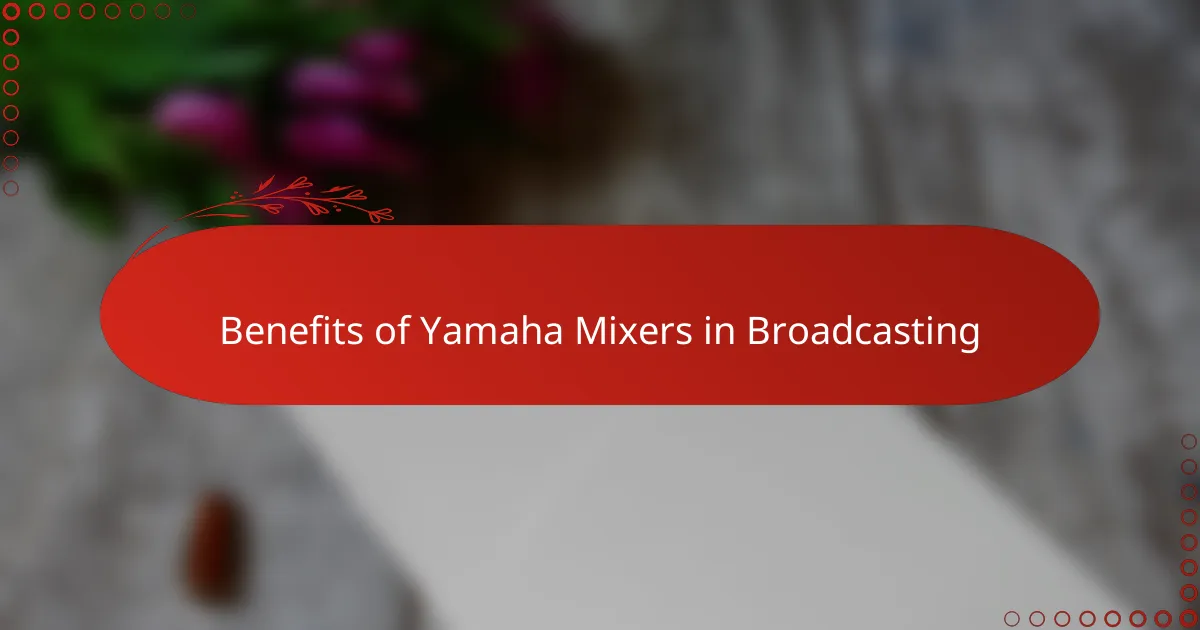
Benefits of Yamaha Mixers in Broadcasting
One benefit I continually notice with Yamaha mixers in broadcasting is their reliability during long live sessions. There was a late-night show I managed when equipment issues could have been a disaster, but the Yamaha mixer stayed rock solid, letting me focus entirely on the content instead of technical glitches. Isn’t peace of mind on air priceless?
Another advantage is how Yamaha mixers deliver clear, warm sound that genuinely enhances voice quality. I’ve often compared broadcasts using different mixers, and Yamaha consistently produces audio that feels more natural and engaging to listeners. Have you ever caught yourself noticing how much better your voice sounds when you switch gear?
Lastly, the user-friendly interface of Yamaha mixers really speeds up my workflow. I recall a morning show where quick adjustments were necessary as calls piled up, and having intuitive controls meant I didn’t miss a beat. When time is tight and the pressure is high, isn’t it great to have equipment that keeps up with your pace?
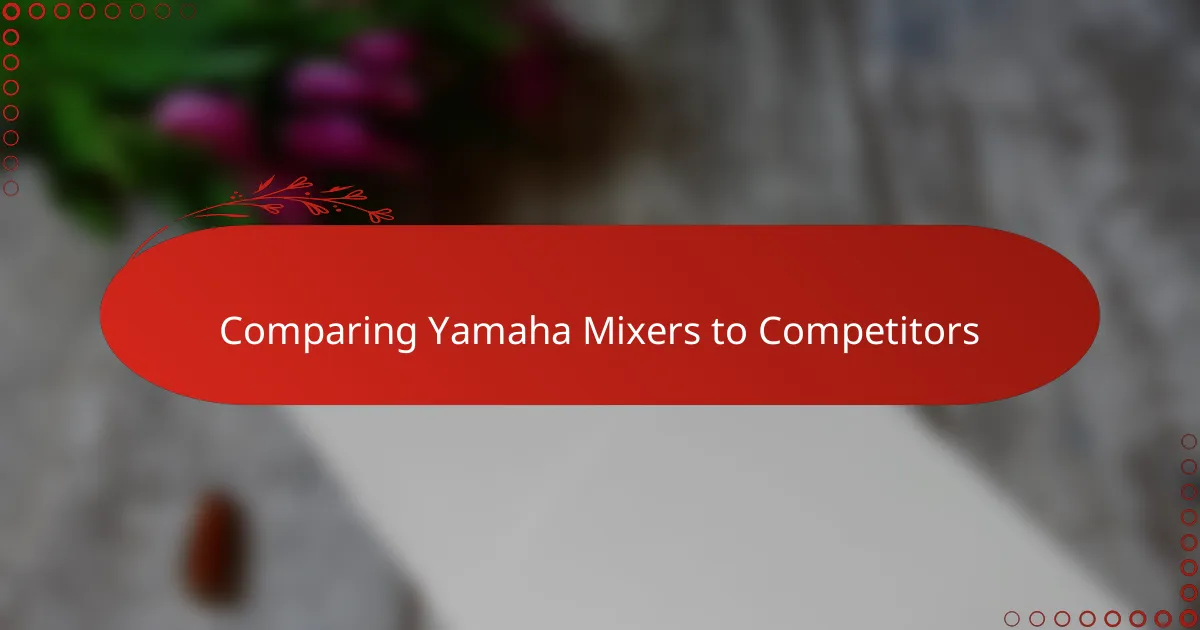
Comparing Yamaha Mixers to Competitors
When I compare Yamaha mixers to others I’ve used, what stands out immediately is how smoothly Yamaha blends ease of use with professional features. Unlike some competitors that overwhelm with complex layouts, Yamaha strikes a balance that feels inviting yet powerful. Have you ever tried to work a mixer that seemed designed by engineers but not for users? Yamaha doesn’t fall into that trap.
In terms of sound quality, I’ve noticed that Yamaha mixers maintain clarity and warmth even in challenging environments, whereas some other brands tend to introduce unwanted hiss or distortion under pressure. I remember switching between mixers during a busy broadcast and hearing a clear difference—the Yamaha’s sound just had a natural richness that made voices more engaging. Wouldn’t you agree that a subtle difference in audio can make or break listener experience?
Connectivity is another area where Yamaha holds its own. While competitors might offer similar ports, Yamaha’s integration feels smoother and more thoughtful, minimizing setup time and troubleshooting. On one occasion, during a live remote, quickly patching in a new microphone without downtime was critical, and Yamaha’s streamlined interface made that possible without a sweat. Isn’t that the kind of reliability you want when the pressure is on?
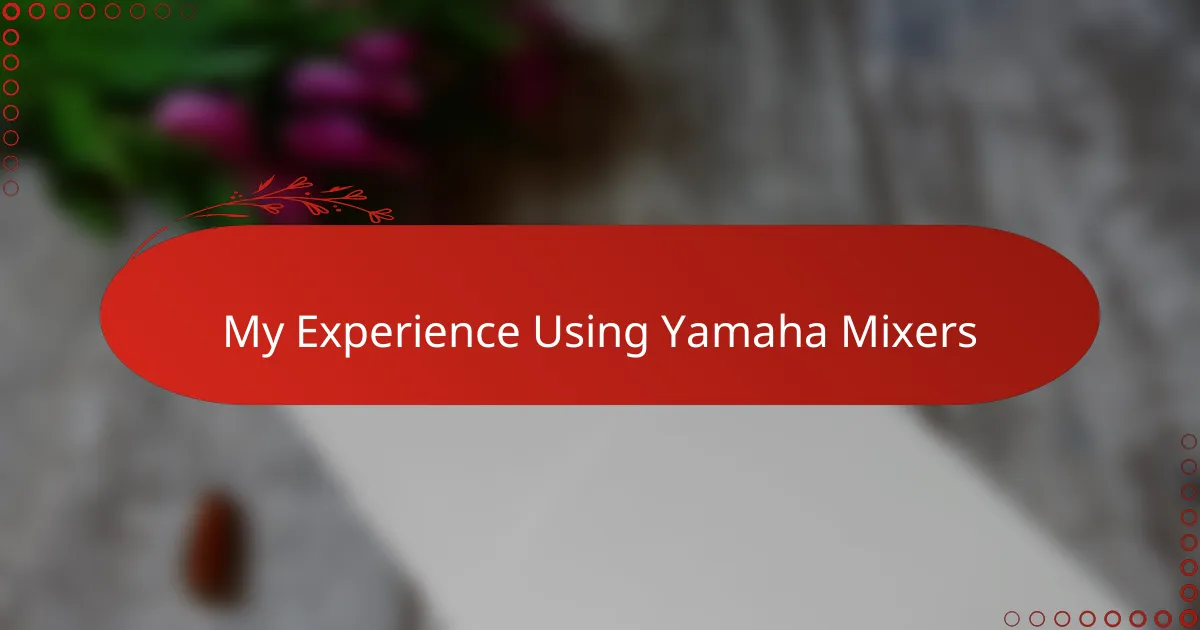
My Experience Using Yamaha Mixers
Using Yamaha mixers over the years, I’ve come to appreciate how they just intuitively understand the demands of live radio. I recall a particular morning when a last-minute guest called in unexpectedly—thanks to Yamaha’s ease of use, I managed to bring their mic up smoothly without missing a beat. Have you ever felt that calm confidence knowing your mixer won’t let you down in a crunch?
What strikes me the most is the consistency in audio quality I get from Yamaha mixers. Even during those hectic multi-source broadcasts, the sound remains clean and warm, which really helps in keeping the listener engaged. I often wonder, how many broadcasts are saved by reliable gear that quietly performs behind the scenes?
There’s also something about the tactile feel of Yamaha’s controls that I find incredibly reassuring. When adjusting levels or EQ on the fly, those smooth faders and responsive knobs give me a sense of precision that’s hard to describe but easy to feel. Doesn’t it make a big difference when your hands just know what to do without hesitation?
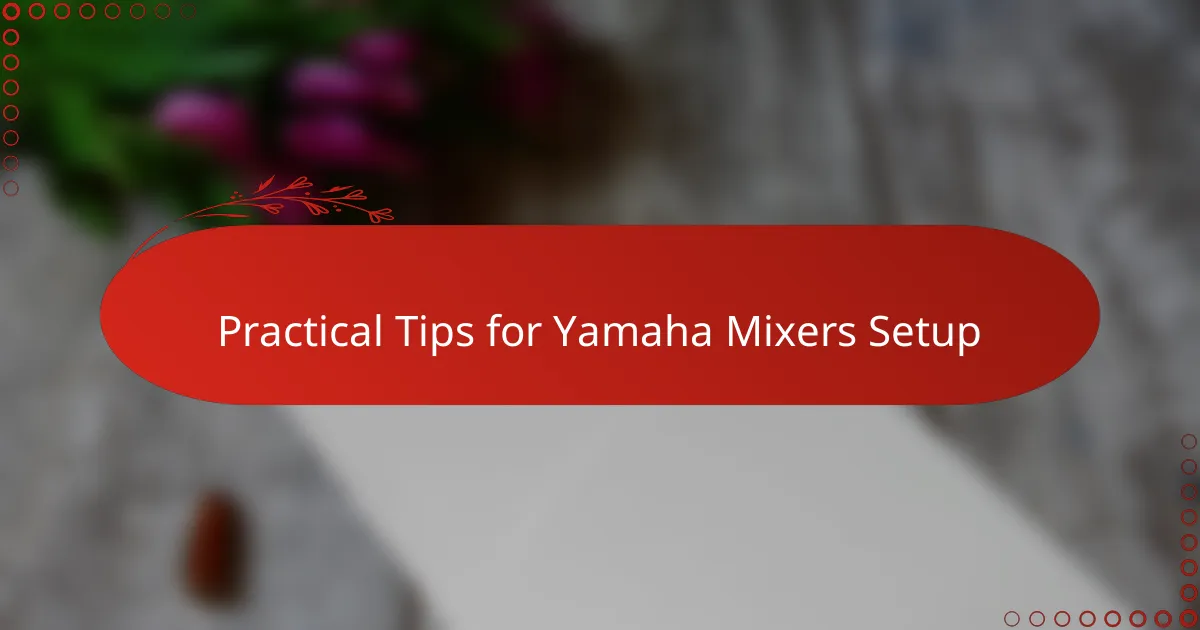
Practical Tips for Yamaha Mixers Setup
Setting up a Yamaha mixer for radio broadcasting is all about patience and getting familiar with its flexible routing options. Early on, I made the mistake of rushing through input assignments and ended up with sources bleeding into the wrong channels—a quick lesson on double-checking your patching before going live. Have you ever run into that panic where an unexpected audio source suddenly appears? Taking the time to label and organize your inputs saves so much stress later on.
One practical tip I always follow is calibrating gain levels meticulously before the show starts. Yamaha mixers offer clear gain knobs with great tactile feedback, which makes it easier to dial in just the right input strength. From my experience, this step can dramatically reduce background noise and prevent distortion, which listeners absolutely notice—even if we don’t always. Don’t you find that a clean, balanced input sets the tone for a smooth broadcast?
Finally, don’t overlook the power of Yamaha’s built-in effects during setup. I remember once using the compressor and EQ in real-time to tame a co-host’s variable voice dynamics, and it transformed the whole sound instantly. It’s like having an extra set of hands smoothing out rough edges without slowing down the broadcast flow. Are you making the most of these onboard tools to enhance your audio on the fly?
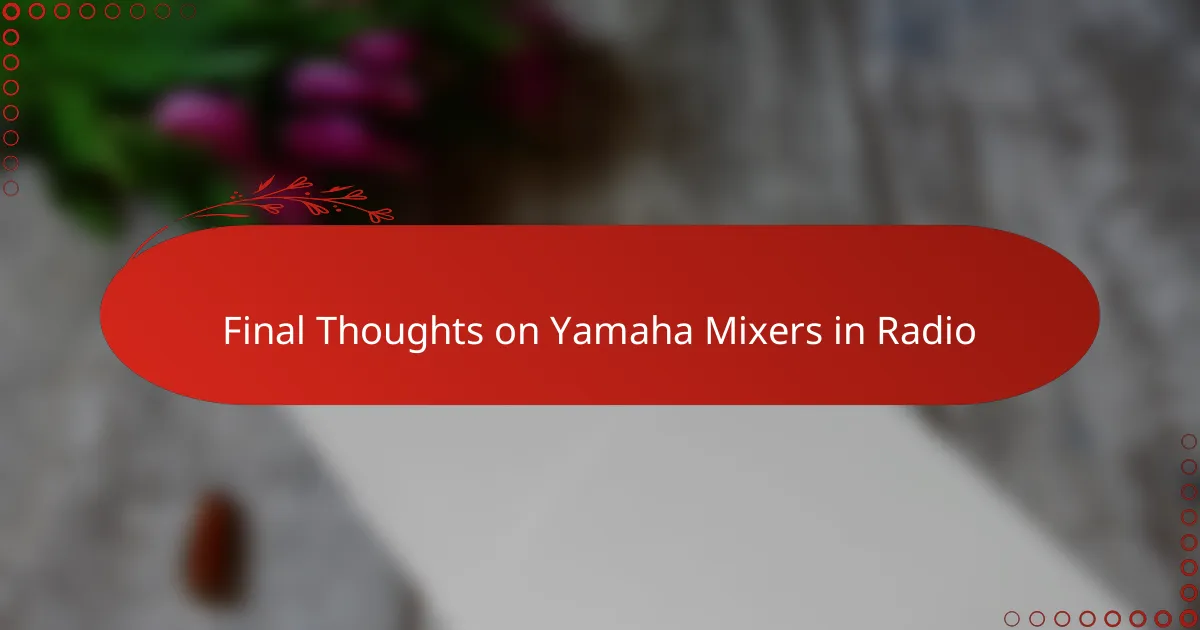
Final Thoughts on Yamaha Mixers in Radio
Looking back on my time using Yamaha mixers in radio, I honestly feel they’ve become more than just equipment—they’re trusted partners in the broadcast booth. I can recall moments when the mixer’s reliability gave me calm during chaotic live shows, letting me focus entirely on delivering content. Isn’t that kind of steady support exactly what every broadcaster hopes for when the pressure is on?
What really sticks with me is how Yamaha mixers consistently deliver the sound quality I want, without fuss or second-guessing. There’s a certain warmth and clarity that just feels right for voices, making every broadcast sound more engaging to listeners. Have you ever noticed how the right mixer can subtly elevate your entire show even when you’re not consciously thinking about it?
At the end of the day, Yamaha mixers strike that rare balance between user-friendliness and professional-grade features. They’ve made my workflow smoother and given me the confidence to handle unexpected challenges on air. For anyone serious about radio broadcasting, isn’t having that perfect blend simply invaluable?
